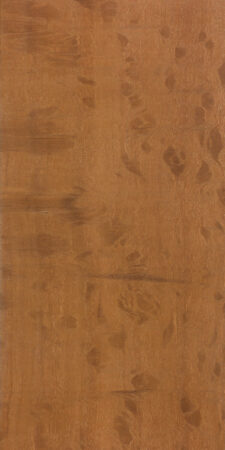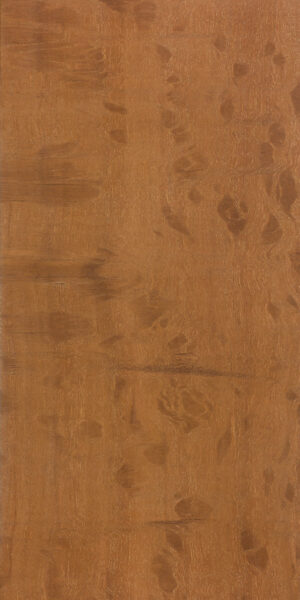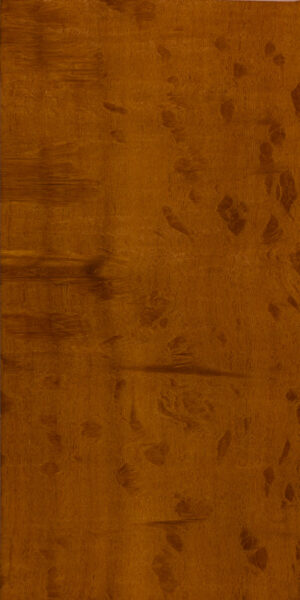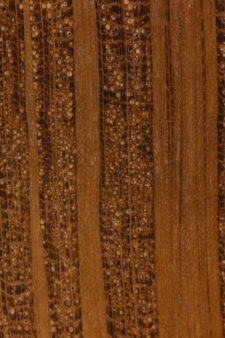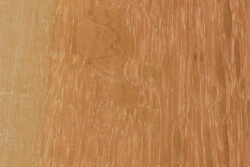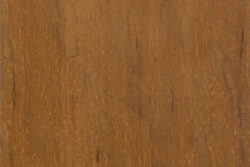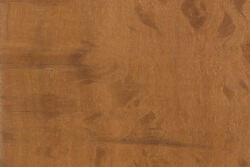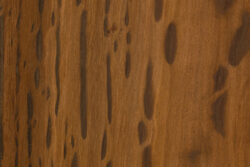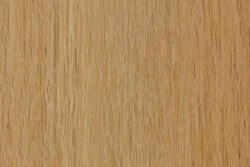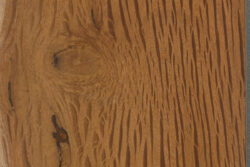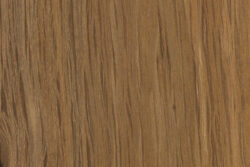Common Name(s): Rock sheoak
Scientific Name: Allocasuarina huegeliana
Distribution: Western Australia
Tree Size: 20-40 ft (6-12 m) tall,
1-2 ft (.3-.6 m) trunk diameter
Average Dried Weight: 55.6 lbs/ft3 (890 kg/m3)
Specific Gravity (Basic, 12% MC): .73, .89
Janka Hardness: 2,110 lbf (9,400 N)*
*Estimated hardness based on specific gravity
Modulus of Rupture: 13,630 lbf/in2 (94.0 MPa)
Elastic Modulus: 2,030,000 lbf/in2 (14.00 GPa)
Crushing Strength: 7,830 lbf/in2 (54.0 MPa)
Shrinkage: Radial: 6.1%, Tangential: 11.4%,
Volumetric: 17.8%, T/R Ratio: 1.9
Color/Appearance: Heartwood can vary from light brown to a darker reddish brown. Very large rays produce a lace-like pattern on flatsawn surfaces, becoming even larger on quartersawn surfaces. (Most lacewood-type woods only achieve a respectable ray fleck when quartersawn). When quartsawn, the ray fleck can sometimes become too large and irregularly patterned for smaller pieces.
Grain/Texture: Grain is straight, with a uniform medium to fine texture and moderate natural luster.
Rot Resistance: Rated as non-durable, though resistant to borers.
Workability: Despite its higher density, the wood is generally easy to work. Turns, glues, and finishes well.
Odor: No characteristic odor.
Allergies/Toxicity: Besides the standard health risks associated with any type of wood dust, no further health reactions have been associated with rock sheoak. See the articles Wood Allergies and Toxicity and Wood Dust Safety for more information.
Pricing/Availability: Generally unavailable outside of its natural range within Australia, supplies are limited to hobbyist and specialty applications domestically.
Sustainability: This wood species is not listed in the CITES Appendices, and is reported by the IUCN as being a species of least concern.
Common Uses: Furniture, turned objects and other small, specialty wood items.
Comments: Although the wood is rather hard, the “rock” in the common name arises from the species’ ability to grow on poor, rocky soil, and is sometimes called granite sheoak.
Not closely related to true oaks (Quercus genus), the etymology of the common name sheoak is ambiguous. Both oaks and sheoaks share a similar ray-flecked appearance on quartersawn surfaces.
Images: Drag the slider up/down to toggle between raw and finished wood.
Identification: See the article on Hardwood Anatomy for definitions of endgrain features.
Porosity: diffuse porous
Arrangement: exclusively solitary
Vessels: small and medium (two distinct sizes), moderately numerous
Parenchyma: banded
Rays: narrow and very wide aggregate rays; normal and very wide spacing (respectively)
Lookalikes/Substitutes: The wide rays serve to separate Allocasuarina from most other genera (except for the closely related Casuarina genus). Additionally, having exclusively solitary pores (rather than a mixture of solitary and radial multiples) further serves to differentiate sheoaks from other hardwood species.
Notes: Rock sheoak tends to have smaller, more frequent pores than other species in the genus. It also has two distinct sizes of pores—both medium and small—another feature that may help separate it from closely related species.
Related Content:

